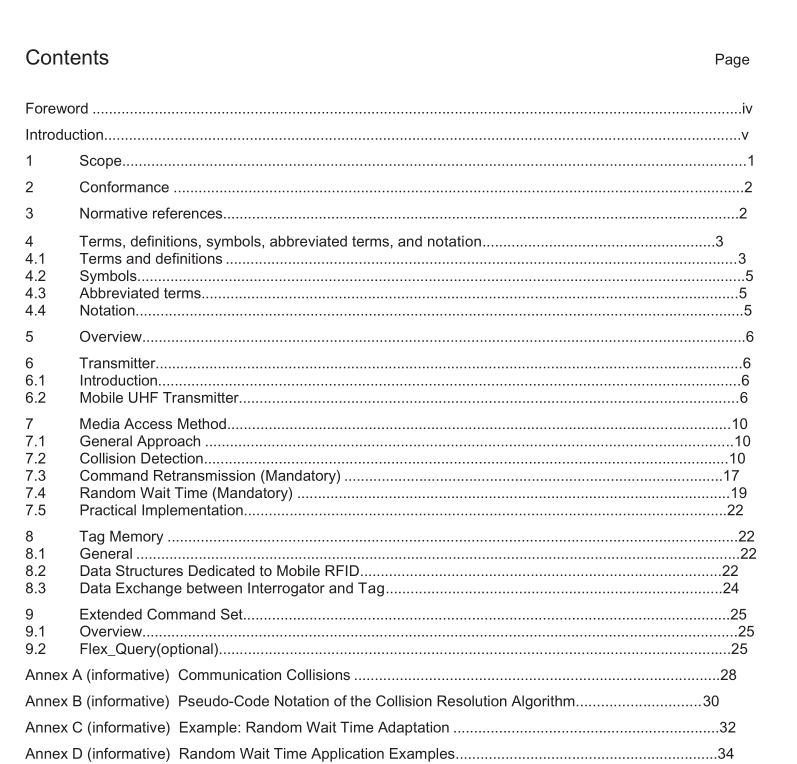BS ISO IEC 29143 pdf download

BS ISO IEC 29143 pdf download Information technology — Automatic identification and data capture techniques — Air interface specification for Mobile RFID interrogators
1Scope
This International Standard applies to Mobile radio frequency identification (RFID) interrogator devices used toinventory passive or semi-passive backscatter tags at 860 MHz to 960MHz in a mobile (non-fixed) applicationindependent from specific communication details, i.e. modulation technique and command set.
Furthermore,the scope of this International Standard is mobile consumer applications,whereas mobileenterprise applications are not covered as long as operating in a closed environment.
An operating environment is considered to be closed if it belongs to a central administrative authority able toguarantee for sufficient isolation,i.e. preventing mobile enterprise interrogator devices from being usedoutside the dedicated operating environment,and if sufficient spatial separation and/or electromagneticshielding from adjacent operating environments is provided.
An application is considered a consumer application if at least one of two interacting entities is a privateindividual (consumer) and the interaction is taking place in the public domain. Consequently, a Mobile RFIDconsumer application is defined as Mobile RFID equipment (e.g. mobile phones equipped with an RFIDinterrogator) being used in a consumer application.
NOTE As there is currently no active contribution on Mobile HF interrogators, this International Standard covers only UHF.
This lnternational Standard specifies
-Mobile RFID interrogator media access control,
– interrogator to interrogator and multiple interrogator to tag collision arbitration scheme including
interrogator requirements,
– interrogator to interrogator and multiple interrogator to tag collision avoidance scheme, and- tag memory use for Mobile RFID applications.
This International Standard does not specify
– physical interactions (the signaling layer of the communication link) between interrogators and tags,
– interrogator and tag operating procedures and commands, and
– the collision arbitration algorithm used to singulate (separate to the current response slot) a specific tag in
a multiple-tag environment.
NOTE These aspects are addressed by other International Standards.
ln particular, this International Standard does not replace any existing RFID air interface specification issuedby lSo/IEC but extends the existing methodologies for fixed RFID interrogators with mechanisms addressing the special challenges of Mobile RFID. The concepts and mechanisms described in this International Standard can be integrated in any existing RFID protocol approved by ISO/IEC for the given frequency range of 860 MHz to 960 MHz (unless explicitly prohibited by such protocol) regardless of the actual command set. The mechanisms defined by this International Standard can be used for Mobile RFID interrogators used in consumer applications and compliant to ISO/IEC 18000-6.









